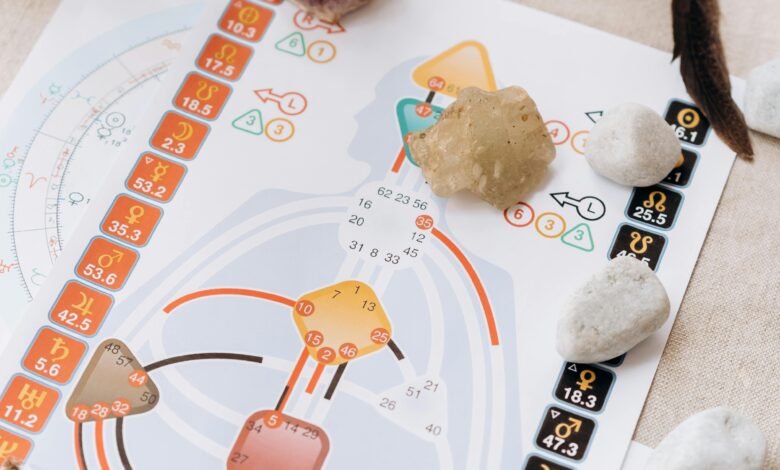How to Use Reiki for Energy Healing: A Comprehensive Guide

Reiki, a Japanese technique for stress reduction and relaxation, has gained widespread popularity as a form of energy healing. Rooted in the belief that an unseen “life force energy” flows through us, Reiki aims to balance this energy to promote physical, emotional, and spiritual well-being. Whether you’re new to Reiki or looking to deepen your practice, this guide will walk you through the principles, techniques, and benefits of using Reiki for energy healing.
What Is Reiki?
Reiki (pronounced “ray-key”) translates to “universal life energy.” It was developed in the early 20th century by Mikao Usui, a Japanese Buddhist monk, who sought to create a method for healing through energy transfer. Practitioners use their hands to channel this universal energy into the recipient’s body, addressing blockages and restoring balance.
Core Principles of Reiki
- Just for today, do not anger.
- Just for today, do not worry.
- Honor your parents, teachers, and elders.
- Earn your living honestly.
- Show gratitude to everything.
These principles emphasize mindfulness, compassion, and gratitude, forming the foundation of Reiki practice.
How Does Reiki Work?
Reiki operates on the premise that imbalances or blockages in our energy fields can lead to physical illness, emotional distress, or mental fatigue. By channeling healing energy, Reiki practitioners aim to:
- Remove energetic blockages.
- Enhance the body’s natural ability to heal itself.
- Promote relaxation and reduce stress.
While scientific evidence supporting Reiki is limited, many people report feeling calmer, more balanced, and rejuvenated after sessions.
Benefits of Reiki Energy Healing
Reiki is known for its holistic approach to wellness. Some of its potential benefits include:
- Stress Reduction : Induces deep relaxation and lowers cortisol levels.
- Pain Relief : May alleviate chronic pain by reducing inflammation and tension.
- Emotional Healing : Helps release negative emotions like anxiety, grief, or anger.
- Improved Sleep : Encourages restful sleep by calming the mind and body.
- Spiritual Growth : Deepens self-awareness and connection to higher consciousness.
- Support During Medical Treatments : Complements traditional therapies like chemotherapy or surgery by easing side effects.
Getting Started with Reiki
Whether you’re practicing Reiki on yourself or others, preparation is key. Follow these steps to begin your journey:
Step 1: Learn About Reiki Levels
Reiki training typically involves three levels (or degrees):
- Level 1 (Shoden) : Focuses on self-healing and treating others in person.
- Level 2 (Okuden) : Introduces symbols and techniques for distance healing.
- Level 3 (Shinpiden/Master Level) : Prepares practitioners to teach and attune others to Reiki.
Consider taking a course from a certified Reiki master to receive proper guidance and attunement—a process that activates your ability to channel Reiki energy.
Step 2: Create a Sacred Space
Set up a peaceful environment conducive to healing:
- Choose a quiet room free from distractions.
- Use candles, incense, or essential oils to enhance the ambiance.
- Play soft music or nature sounds if desired.
- Ensure both you and the recipient are comfortable.
Step 3: Prepare Yourself Mentally and Physically
Before beginning a session:
- Meditate briefly to center yourself and connect with universal energy.
- Set an intention for the session (e.g., “I intend to bring peace and healing to this person”).
- Wash your hands to cleanse any residual energy.
Basic Techniques for Performing Reiki
Here are some fundamental methods for conducting a Reiki session:
1. Hand Positions for Self-Healing
If practicing Reiki on yourself, place your hands gently on or near various parts of your body. Common positions include:
- Head : Place hands over the forehead, temples, or crown.
- Heart Center : Rest hands over the chest area.
- Abdomen : Position hands above the stomach or lower back.
- Limbs : Move hands along arms and legs to clear stagnant energy.
Hold each position for 3–5 minutes, focusing on sending healing energy.
2. Hands-On Healing for Others
When working with another person:
- Ask permission before starting the session.
- Begin at the head and work downward, covering major chakras and areas of concern.
- Use light touch or hover your hands slightly above the body if preferred.
- Trust your intuition to guide where extra attention may be needed.
3. Distance Healing
Distance Reiki allows you to send energy across space and time. To perform it:
- Visualize the recipient surrounded by light.
- Use Reiki symbols learned during Level 2 training to amplify the connection.
- Send positive intentions and imagine energy flowing toward them.
Tips for Maximizing Your Reiki Practice
- Practice Regularly : Consistency strengthens your ability to channel energy effectively.
- Trust Your Intuition : Allow your instincts to guide hand placements and session duration.
- Stay Grounded : Drink water and eat nourishing foods after sessions to replenish your energy.
- Combine with Other Practices : Pair Reiki with meditation, yoga, or aromatherapy for enhanced results.
- Respect Boundaries : Always seek consent and honor the recipient’s comfort level.
Common Misconceptions About Reiki
- “You Need Special Powers to Do Reiki.”
Anyone can learn Reiki; no innate abilities are required. Attunements open the channel for energy flow. - “Reiki Can Replace Medical Treatment.”
While Reiki complements conventional medicine, it should not substitute professional healthcare. - “It Only Works If You Believe In It.”
Reiki works independently of belief systems—it’s about connecting with universal energy.




